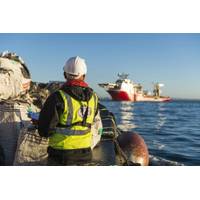On March 20, 2002, a committee of the U.S. House of Representatives approved legislation addressing security issues in the ports of the United States. The legislation will proceed to the floor of the House of Representatives for further action. Similar legislation has already passed the full Senate.
Intertanko is following the legislation in both chambers and offers the following observations for the guidance of our members:
Since the events of September 11, considerable attention has been given to conditions in U.S. ports by both the Congress and the Administration. The primary concern has been the difficulty of monitoring the contents of the approximately 16,000 cargo containers that daily pass through U.S. container ports. Concern that cargo containers might be used to transport potentially destructive weapons into the United States has stimulated extensive public debate on whether there are any practical means of screening container contents at a distance from their actual point of entry into the United States. Legislative proposals have focused on establishing security plans for vessels, advance notification requirements for crew lists and passenger and cargo manifests, improvements in credentialing for vessel and shoreside workers and port security assessments that would permit the identification of risks from various overseas locations. The shape of final legislation is uncertain at this writing. Differing House and Senate provisions will have to be conferenced to reconcile their disparate content.
The debate in the United States has thus far focused primarily on the complex difficulty of screening containerized cargo. A secondary area of emphasis has been passenger vessels. Liquid bulk transport has been, with the exception of incidents involving restrictions on the movement of specific volatile cargoes, a matter of less intense discussion. Obviously, however, measures that address documentation, crew credentials, on-board security requirements, and other operational measures are likely to be applied without regard to vessel type.
There is no question that the United States and other major maritime nations must examine security issues in the major ports of the world. Many of the proposals being considered in the United States and elsewhere are reasonable responses to the potential of terrorist attacks in a maritime setting. Additionally, the devotion of additional resources and attention to conditions in ports in many instances is consistent with INTERTANKO's long-standing efforts to increase public and governmental awareness of the importance of safe maritime transport. From INTERTANKO's perspective, however, the issues raised by U.S. port security initiatives also raise concerns about costs and effectiveness of proposed measures, issues concerning document requirements from an industry already overburdened with paperwork, liability exposure of owners and crews in the event of terrorist activities, unilateral domestic legislation that inadequately addresses the trans-national dimensions of maritime security and questions concerning the ability of existing insurance and compensation structures to handle damages and claims that might result from a catastrophic attack involving a vessel.
INTERTANKO has noted with approval the efforts expended by the United States Coast Guard to ensure an effective international context for addressing maritime security concerns within the structure of the International Maritime Organization, where INTERTANKO has also been actively involved in discussions. We are hopeful that domestic U.S, legislation leaves sufficient discretion to the Coast Guard to develop pragmatic, effective international procedures that can be applied on a multi-national basis after consensus is developed on an international approach. We are hopeful that prompt action in IMO on reasonable security improvements will provide a useful example to individual nations and ports of rational security planning, while at the same time deterring parochial measures that add to the confusion of operations within sensitive port areas.
Source: Intertanko
Wednesday, April 2, 2025












